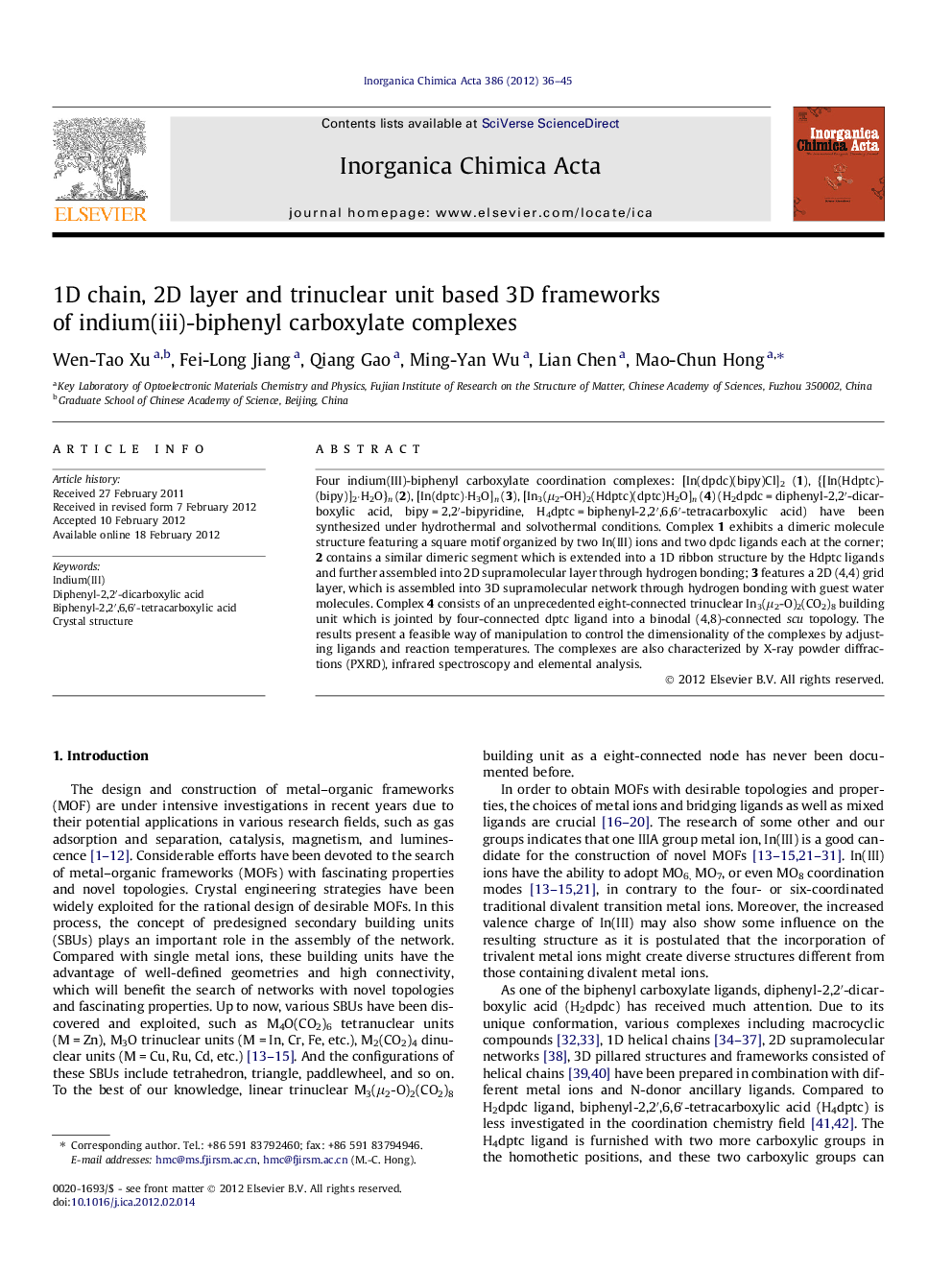| کد مقاله | کد نشریه | سال انتشار | مقاله انگلیسی | نسخه تمام متن |
|---|---|---|---|---|
| 1310980 | 1499201 | 2012 | 10 صفحه PDF | دانلود رایگان |

Four indium(III)-biphenyl carboxylate coordination complexes: [In(dpdc)(bipy)Cl]2 (1), {[In(Hdptc)(bipy)]2·H2O}n (2), [In(dptc)·H3O]n (3), [In3(μ2-OH)2(Hdptc)(dptc)H2O]n (4) (H2dpdc = diphenyl-2,2′-dicarboxylic acid, bipy = 2,2′-bipyridine, H4dptc = biphenyl-2,2′,6,6′-tetracarboxylic acid) have been synthesized under hydrothermal and solvothermal conditions. Complex 1 exhibits a dimeric molecule structure featuring a square motif organized by two In(III) ions and two dpdc ligands each at the corner; 2 contains a similar dimeric segment which is extended into a 1D ribbon structure by the Hdptc ligands and further assembled into 2D supramolecular layer through hydrogen bonding; 3 features a 2D (4,4) grid layer, which is assembled into 3D supramolecular network through hydrogen bonding with guest water molecules. Complex 4 consists of an unprecedented eight-connected trinuclear In3(μ2-O)2(CO2)8 building unit which is jointed by four-connected dptc ligand into a binodal (4,8)-connected scu topology. The results present a feasible way of manipulation to control the dimensionality of the complexes by adjusting ligands and reaction temperatures. The complexes are also characterized by X-ray powder diffractions (PXRD), infrared spectroscopy and elemental analysis.
The syntheses of four indium(III)-biphenyl carboxylate coordination complexes involving [In(dpdc)(bipy)Cl]n (1), {[In(Hdptc)(bipy)]2·H2O}n (2), [In(dptc)·H3O]n (3), [In3(μ2-OH)2(Hdptc)(dptc)H2O]n (4) have been described. The different structures among complexes 1–4 varying from isolated structure, 1D ribbon structure and 2D layer, to 3D framework highlight the effects of the organic acid ligand, the ancillary ligand, and reaction temperature on formation of the products.Figure optionsDownload as PowerPoint slideHighlights
► H2dpdc and H4dptc ligands were used to obtain new coordination polymers.
► H4dptc ligand acts four coordination mode in three compounds.
► Four compounds present isolated structure, 1D ribbon structure and 2D layer, to 3D framework, respectively.
► The two ligands promote hydrogen bond and π–π interactions.
Journal: Inorganica Chimica Acta - Volume 386, 15 May 2012, Pages 36–45